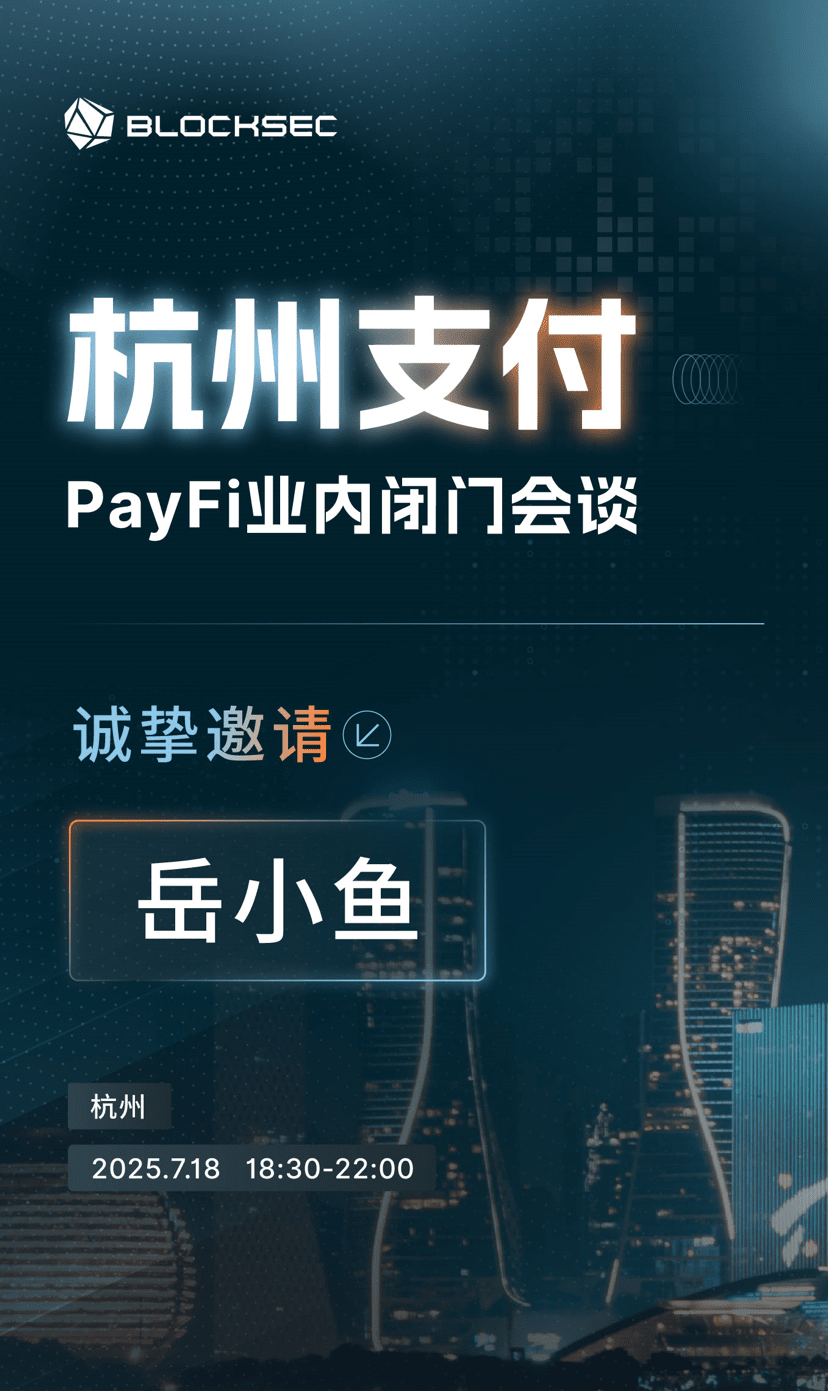1. I didn't expect that a small private gathering would ultimately turn into an industry conference.
Originally, this was a small private discussion on stablecoin payments with about twenty people, but more and more people joined, ultimately turning it into a large meeting of over one hundred participants, which can be said to be the stablecoin payment conference in Hangzhou.
This shows the current enthusiasm for stablecoin payments; it's not just a hidden current, but all parties are rushing in.
I have personally engaged in stablecoin payments and have felt the enthusiasm for stablecoin payments; I can also deeply understand the value of stablecoin payments and the changes they will bring.
Now, the intensity of interest in stablecoin payments has further intensified.
2. Why did so many people attend the Hangzhou Stablecoin Payment Conference?
Hangzhou itself is a national e-commerce hub, led by Alibaba, with a very developed e-commerce ecosystem.
From the upstream supply chain to the downstream live streaming sales and internet celebrity economy, payment serves as a core infrastructure throughout.
E-commerce has three flows: information flow, capital flow, and logistics flow.
Payment represents the flow of funds.
The development of the e-commerce industry has also led to the maturity of the payment sector, making Hangzhou a hub for the payment industry.
In addition to the well-known Alipay, there are actually many cross-border payment giants like Lianlian Pay, Pingpong Pay, and NetEase Pay.
With so many payment companies in Hangzhou, a large number of payment veterans have naturally gathered.
But it must be understood that the payment business has matured too much, so much so that it's become highly competitive, thus payment companies want to expand into new businesses.
The rise of stablecoins, especially the listing of the compliant stablecoin leader Circle, combined with JD's application for a stablecoin license in Hong Kong, has attracted more attention to stablecoin payments.
Thus, this small gathering on stablecoin payments in Hangzhou quickly ignited the entire payment industry in Hangzhou; traditional payment companies all want to enter the stablecoin payment sector.
3. Traditional payment institutions are engaged in a preparedness competition for stablecoin payments.
Traditional payment institutions have business scenarios and merchant networks, while stablecoin payments can effectively reduce the costs and timeliness of cross-border payments; these two can be said to be a natural fit, so how could traditional payment institutions not be tempted?
Stablecoins are the ultimate weapon for cross-border payments!
Since stablecoin payments will inevitably transform the traditional payment system, it's better to join as soon as possible; not to mention first-mover advantages, at least we shouldn't be overtaken by competitors.
This means that if you don't act, your competitors may act first, ultimately putting you in a passive position, so everyone has to engage in a 'preparedness competition' for stablecoin payments.
As a result, the stablecoin payment sector has been rolled up by traditional payment institutions.
4. The main forces at the Hangzhou Payment Conference are mainly two types: one is traditional payment institutions, and the other is various technical service providers serving traditional payment institutions.
Traditional payment institutions are the main force in stablecoin payments, and around this main force, a group of technical service providers has emerged.
Traditional payment institutions do not understand blockchain technology and lack relevant experience, so they need someone to help provide the necessary services.
Stablecoin payments are still quite complex.
For enterprises, there is a need for enterprise-level wallet solutions, for KYT/KYC/AML anti-money laundering services, for license applications or compliance consulting services, for on-chain security services, etc.
Thus, a bunch of providers has emerged in these service areas.
The organizer of this conference is BlockSec, a well-known smart contract auditing company in the Web3 industry, which also wants to seize this wave of payment and provide relevant solutions for payment companies.
BlockSec not only provides basic contract auditing services but also offers KYT anti-money laundering services, on-chain attack interruption, and other security services.
Therefore, we can see that the wave of stablecoin payments has already brought many opportunities to various industries.
Various infrastructure project parties in the Web3 industry need to seize this opportunity; such grand narratives, major trends, and big cakes are hard to come by.
Currently, the sub-sector of PayFi worth paying attention to is Huma Finance.
5. The highlight of this conference was undoubtedly the Yiwu research sharing by CC, the head of the Morph public chain ecosystem.
Previously, the domestic brokerage Huatai published a research report stating that the world small commodity center, Yiwu in China, stablecoins have already become an important tool for cross-border payments; in 2023, the on-chain stablecoin flow exceeded 10 billion USD.
Later, a reporter from the 21st Century Business Herald specifically went to Yiwu for investigation, but the conclusion was that only a few merchants were charging.
So, what is the actual usage of stablecoins in Yiwu? This seems to be a mystery.
Morph public chain is currently focused on the payment field, so CC led a research trip to Yiwu.
The general conclusion is: the actual situation lies somewhere in between, it is not as large as Huatai claims, but also not as small as the 21st Century Business Herald suggests; merchants have already begun using stablecoins voluntarily.
Employees of brokerage firms writing research reports just to serve the company's consulting business may intentionally exaggerate;
Traditional media reporters don't understand blockchain either; they just ask merchants randomly, and many are actually hesitant to speak; only those with business dealings will reveal the truth, so the conclusions are not reliable.
Only those practitioners in the stablecoin payment industry who are truly engaged in actual business can access firsthand information and draw conclusions that are closer to the truth.
6. What opportunities do we ordinary users have?
From this Hangzhou Payment Conference, it can be seen that this is a feast for institutions.
Traditional payment institutions are driving the wave of stablecoin payments, and they can obtain a second growth curve;
Various infrastructure projects in Web3 have gained more customers and business income;
Ordinary users will not participate in this conference and seem unaware of this wave of stablecoin payments.
It can only be said that this is the calm before the storm; beneath the seemingly calm surface of the sea, currents are actually surging.
The transformation of stablecoin payments to the traditional payment system will ultimately affect every ordinary user, reflecting in daily consumption and cross-border remittances.
Of course, a more direct benefit is that the stablecoin sector will likely see a 'battle of a hundred coins' in the future, where many new stablecoin forces will subsidize to seize market and liquidity, allowing retail investors to profit.
We can only wait and see.




